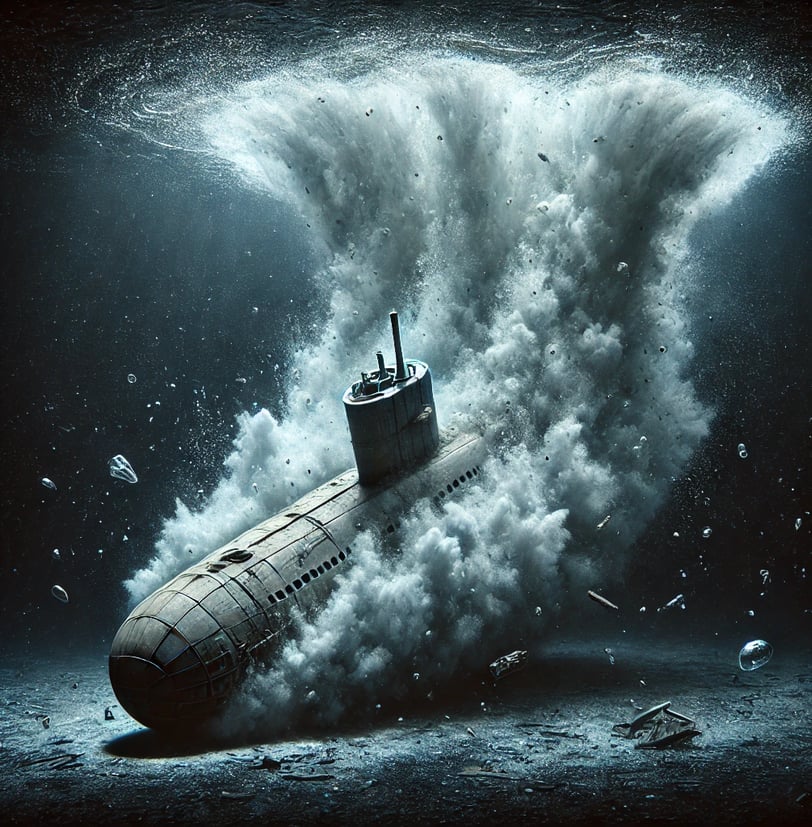The Titan Submarine Accident: The Tragedy During the Titanic Expedition
On June 18, 2023, the Titan submarine, operated by the company OceanGate Expeditions, suffered a catastrophic implosion while conducting an expedition to the Titanic wreckage. The accident resulted in the deaths of all five occupants on board and sparked an intense debate about safety, regulations, and the risks associated with deep-sea explorations.
2/13/20252 min read


The Titan Submarine
The Titan was an experimental submersible designed to explore the ocean depths. With a hull made of carbon fiber and titanium, its structure was developed to withstand extreme pressures at more than 3,800 meters (12,500 feet) below the surface. The vessel was operated by OceanGate Expeditions, a company that promoted both tourism and scientific missions to the Titanic wreck, located at the bottom of the Atlantic Ocean.
Technical and Physical Characteristics
The Titan had the following specifications:
Length: Approximately 6.7 meters (22 feet).
Width: 2.8 meters (9.2 feet).
Height: 2.5 meters (8.2 feet).
Material: Constructed with a carbon fiber and titanium hull to withstand extreme deep-sea pressures.
Capacity: Up to five occupants, including the pilot and passengers.
Control System: Remotely controlled using a commercial joystick, similar to a video game controller.
Autonomy: Designed for missions lasting up to 96 hours of oxygen supply.
Communication System: Used text messages for communication with the surface.
Propulsion: Equipped with electric thrusters for movement in multiple directions.
Lighting and Visibility: Featured LED lighting and an acrylic viewport for external observation.
The vessel was designed to accommodate five people, including a pilot and four passengers. Unlike traditional submarines, the Titan used an unconventional control system, including a gaming-style joystick, which raised concerns about its reliability.
The Fatal Expedition
The Titan’s journey began on June 16, 2023, departing from St. John’s, Canada, aboard its mothership, the Polar Prince. The mission aimed to descend to the Titanic wreckage, offering passengers a unique opportunity to observe the legendary ship that sank in 1912.
On June 18, the submarine began its descent, but approximately 1 hour and 45 minutes after submerging, it lost contact with the surface. This disappearance triggered an international search operation involving authorities from the United States, Canada, and other countries.
The Implosion of the Titan
After days of intensive searching, the Titan’s wreckage was discovered about 500 meters (1,640 feet) from the Titanic’s remains. Investigations determined that the submersible suffered a catastrophic implosion due to structural failure of its hull.
The extreme pressure at nearly 4,000 meters (13,000 feet) below sea level can reach up to 400 times the pressure at the surface. Any defect in the structure could result in an instantaneous and devastating failure, as was the case with the Titan. Experts suggested that the material used in the submarine’s construction may have experienced fatigue over previous voyages, compromising its integrity.
Who Was on Board
The tragedy claimed the lives of five individuals:
Stockton Rush – CEO of OceanGate and pilot of the Titan.
Hamish Harding – British billionaire entrepreneur and explorer.
Shahzada Dawood – Pakistani businessman and philanthropist.
Suleman Dawood – Shahzada’s 19-year-old son.
Paul-Henri Nargeolet – Oceanographer and Titanic expert.
All occupants lost their lives instantly due to the implosion.
Consequences and Repercussions
The Titan accident raised numerous questions about the regulation of deep-sea expeditions. Experts highlighted the lack of proper certification for the submersible, as OceanGate had opted to bypass stringent inspections from maritime certification agencies.
Additionally, the incident sparked discussions about extreme tourism and the dangers of exploring hostile environments like the deep ocean. Many marine scientists and engineers emphasized the need for stricter safety protocols to prevent future tragedies.
Final Considerations
The Titan’s implosion was one of the most tragic and widely publicized underwater accidents in recent years. The event not only resulted in the loss of lives but also ignited a global debate about the safety of commercial submarine expeditions. The case serves as a stark reminder of the need for stricter regulations and the development of safer technologies for deep-sea exploration.
Explore
Discover diverse topics in one convenient hub.
Connect
Learn
contact@mindstormblog.com
© 2025. All rights reserved.

